- Discovering the Hill
- No content found
- Plan your visit
- No content found
- Agenda
- 2022-2025 : Renovation of the chapel
- Shop
In 2016, the « Association Œuvre Notre-Dame du Haut » decided to celebrate the 30th anniversary of the Assisi meeting which had been organized by Pope John-Paul II in 1986.
This decision can seem surprising, considering the isolation of the site in a rural context with no reference to the sociological fabric of big urban centres. Yet this choice corresponds to the great diversity of the visitors coming from all over the world.
Experience teaches us that this public, who mostly comes to Ronchamp for architectural reasons, experiences an emotion caused by the site as a whole.
The different actors on the hill have associated since 2017 to organize one day around one federating theme, open to all kinds of religious trends as well as to non-believers.
The cultural action of the Porterie is associated to this action by conceiving exhibitions which are in display in the welcome space, about similar experiences echoing this initiative.
The next meeting will take place on the 6th June, 2021.
In order to make this commitment to human brotherhood more constant, the people acting on the hill are working on the project of a House for Peace, aiming at contributing very concretely to the great expectations of the world today.
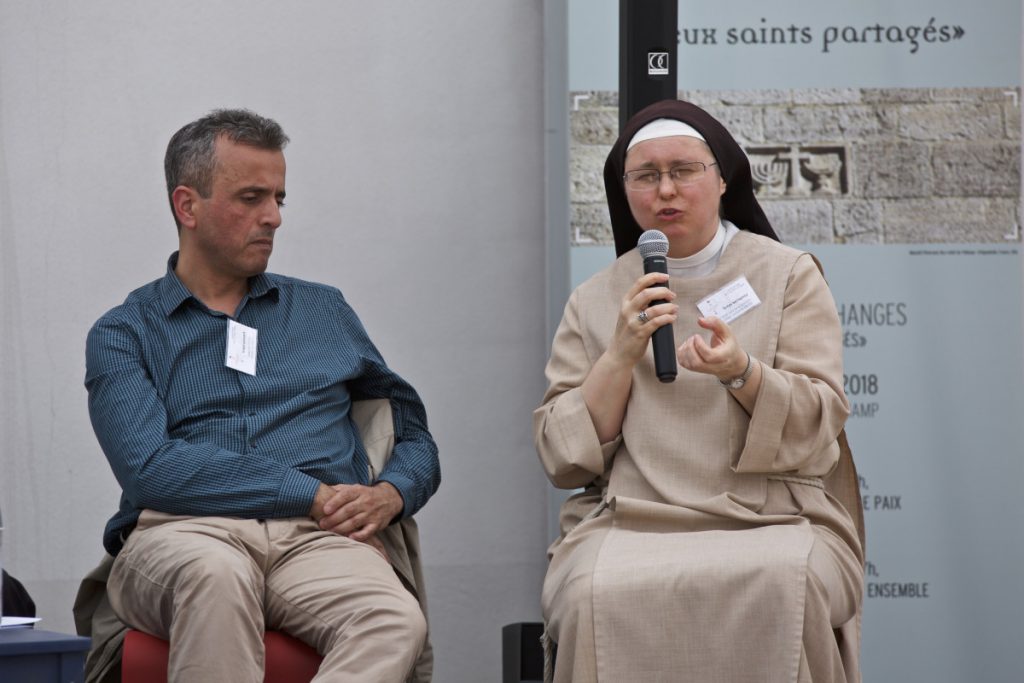
In September 2020, the hill of Notre-Dame du Haut invited to discover prayers sung between the West and the East in different traditions. Aramaic languages, Hebrew, Arab, Latin, Spanish enable to express the deepest faith through all the emotions of the human soul, from pain to thanksgiving and elation.
To start with, Psalms from the First Testament were sung by Louis GROSLAMBERT and Pierre GUILBERT. They were followed by a recitative from a Koran extract by Habibou TOURÉ, Imam of the Great Mosque in Belfort.
The choir « L’Oeuvre d’Orient » from Belfort sang Christian songs in Aramean and Arabic. For the Jewish tradition, Marie-Josèphe GALLORINI sang the Kaddish prayer. It was followed by Jewish songs from Spain and Turkey. A musical pause with SHAO Zhongqin Louise brought up the Chinese tradition. Sister Marie-Claire-Denys sang a song to Mary of Transylvania.
The voice can be considered the most ancient musical instrument. It makes the whole body resonate to create sounds on a large vocal range. This can be the cause for great emotions for the person who experiences it. Contrary to a musical instrument which produces a sound, this vibration is experienced inside the body, close to the mind which directs it and in a constant dialogue with the ear controlling it. It causes a great feeling of fulfilment. We understand better then the importance of singing as an expression of the religious feeling through different cultures.
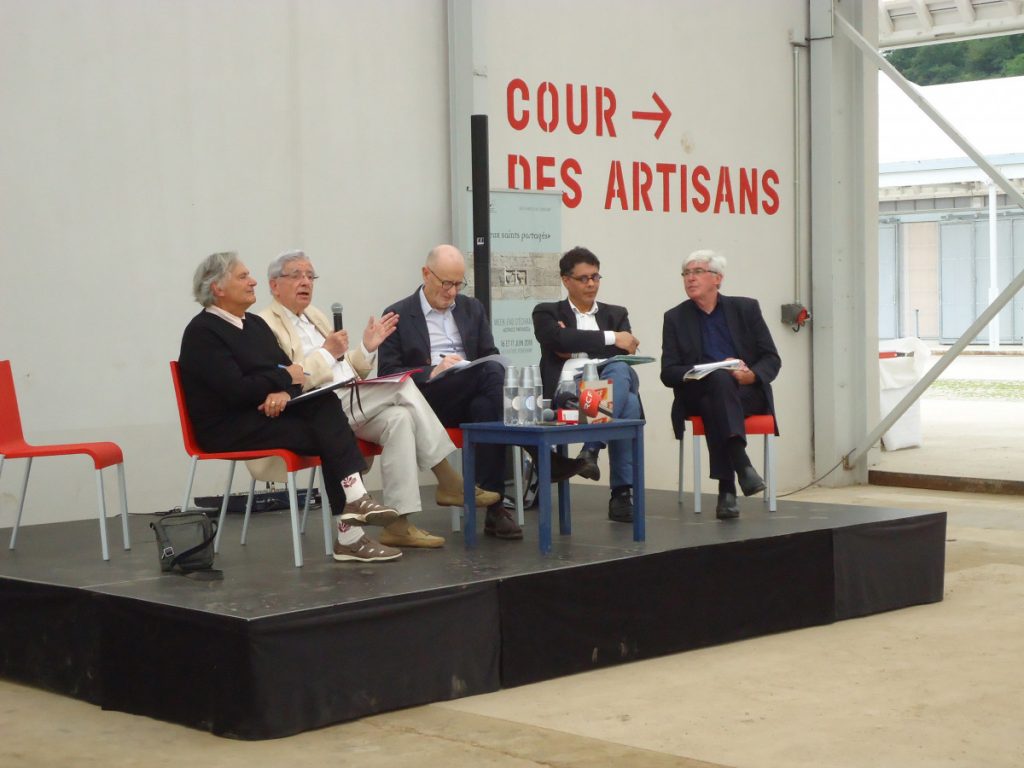
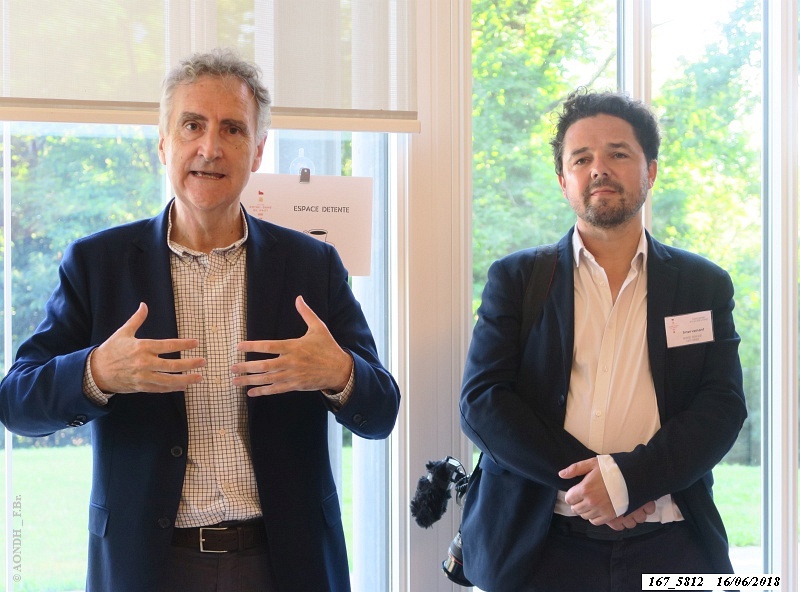
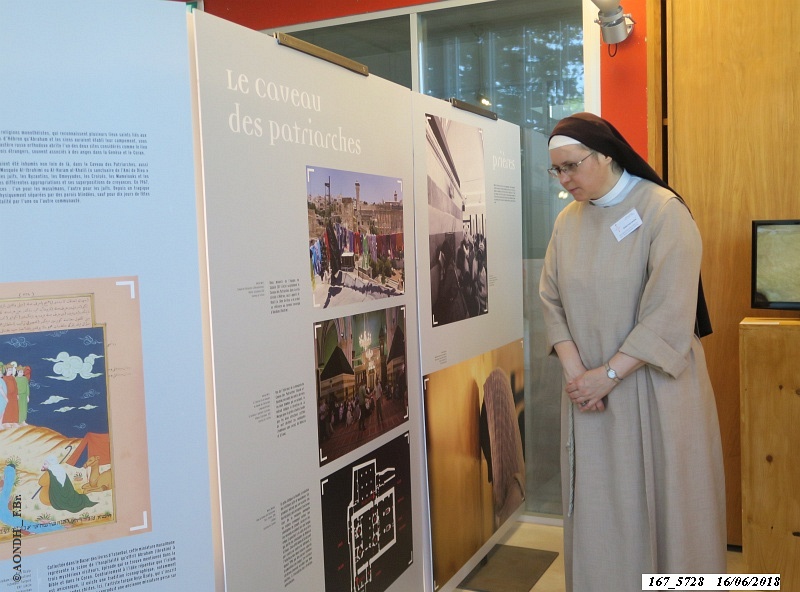
This exhibition was created and in display between 2018 and 2019 in the Porterie of Notre-Dame du Haut in Ronchamp. It is actually the shortened version of the exhibition called “Shared Sacred Sites” which took place in the Museum of Europe and Mediterranean civilisations (Mucem) in Marseilles in 2015.
At the Mucem, this exhibition was a great success, with over 120,000 visitors in four months. The public was very sensitive and very keen to be given other points of view on religions than those given by the media.
Without overlooking the conflicts and the fights between monotheisms, this exhibition offers to take “a step aside” to better grasp a little-known phenomenon: the sanctuaries visited in Europe and around the Mediterranean by the faithful of different religions.
The exhibition had not been planned to tour different sites, yet in its longer version it stopped in new places: the Bardo Museum in Tunis (2016); the Thessaloniki Photography Museum, the Macedonian Museum of Contemporary Art and in Yeni Cami in Thessaloniki (2017); the National Museum of the History of Immigration in Paris (2017); in Dar El Bacha Museum of Confluences in Marrakech (2017); the New-York Public Library, the Morgan Library & Museum and at the CUNY Graduate Center in New-York (2018); Depo Istanbul (2019)…
A shortened version was tailor-made for the site of Notre-Dame du Haut. It is this exhibition which is offered for tours.
« Shared Sacred sites » is the result of many years of scientific research led by international teams of researchers. The two Commissioners in charge of the exhibit are Dionigi Albera and Manoël Pénicaud, anthropologists for the CNRS (National Center for Scientific Research).
This touring exhibition is small, with a display case of original artefacts and 15 frames only.
The main elements are reproduced on 38 standing panels with several films. The exhibition can be divided into four parts: The Holy Land; Christian Mary, Muslim Mary; Shared religions in architecture; Witnesses and transmitters.
The exhibition is displayed on exhibition panels standing on wooden bases.
The texts are in French but brochures in English are available.
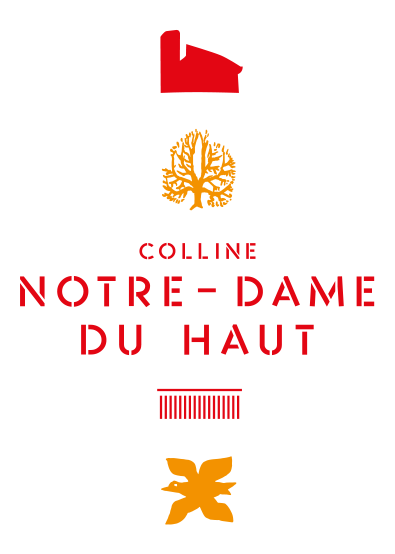
13 rue de la Chapelle
F-70250 Ronchamp
+33 (0)3 84 20 65 13
Contact
Until Friday 18 April 2025: 10am to 5pm
From Saturday 19 April 2025: 10am to 6pm
From Monday 12 October 2025: 10am to 5pm
Last admission: 30 minutes before closing time. Closed on 25 December and 1 January
For journalists
Connect
Educational resources
To go further
+33 (0)3 84 20 73 26
Contact
Réalisation DN Consultants